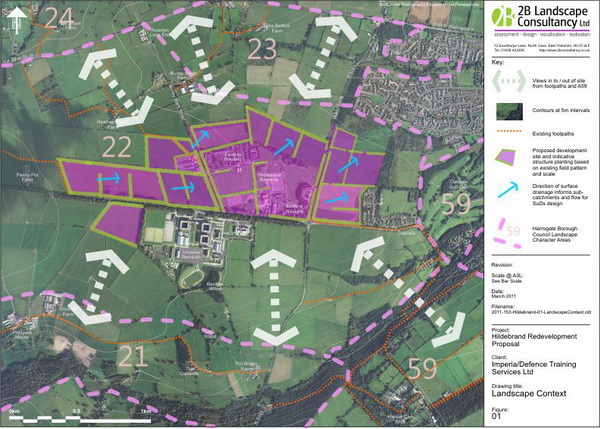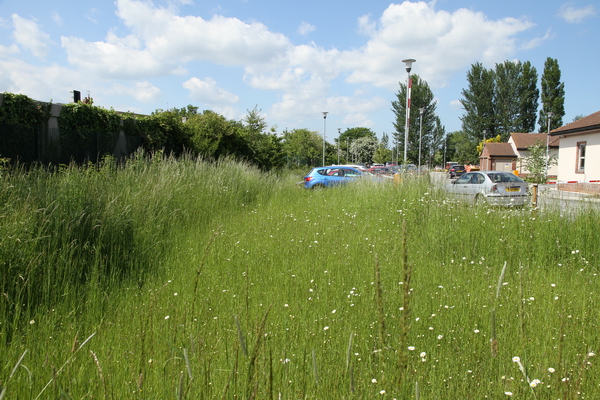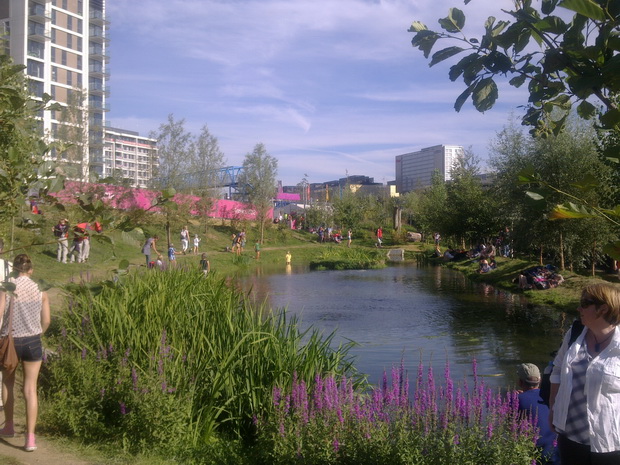
The Building Research Establishment (BRE) has sensibly introduced an alternative, the Home Quality Mark (HQM). This was discussed at a recent Landscape Institute Technical Committee meeting, and it was agreed that there is a great deal to commend the HQM. Along with the many references to materials, energy management, interior design and the like, there are numerous statements as to the importance of the external environment. We have picked out the major ones below (and commented in green).
Site Context (Landscape Architects are all about context!)
Site Survey
It is important that where a home is built is carefully considered , understanding the opportunities and constraints that will affect the way your home meets your needs now and in the future.

The HQM will primarily focus on making sure there is an awareness of:
- The condition of land, including contamination, flood risk, security, privacy and nuisance (as well as: vegetation cover, views in/out, orientation, sun and wind, micro-climate, relationship to town/urban setting, 'lie of the land', awareness of landform for creative and natural drainage opportunities)
- Drainage and sewage arrangements (SuDs - see below)
Design & Character
The look and feel of your home is an important factor when you're looking for a new home. A new home should also complement the existing area, taking into account local character whilst creating an attractive design that adds to the overall quality and character of the area.
HQM will give recognition for:
The look and feel of your home is an important factor when you're looking for a new home. A new home should also complement the existing area, taking into account local character whilst creating an attractive design that adds to the overall quality and character of the area.
HQM will give recognition for:
- Engaging with the community and other local bodies through consultation and discussion around design decisions (engagement requires simple clear graphics, not engineering drawings)
- Rewarding homes that fit in with the local character and, for larger developments, create public spaces associated with your home (because a home is never just a building)
Building Footprint and Layout
The design and layout of your home should meet your space needs whilst efficiently using the space available. This can be achieved through the efficient use of your home's footprint and orientation and the careful arrangement of buildings within a plot or in a community.
HQM will encourage this by:
The design and layout of your home should meet your space needs whilst efficiently using the space available. This can be achieved through the efficient use of your home's footprint and orientation and the careful arrangement of buildings within a plot or in a community.
HQM will encourage this by:
- Rewarding the efficient use of a home's footprint, maximising quality external space for occupants without compromising internal space. (think outside the box!)
Transport Provision
It is important to be able to move around your local area safely and efficiently and the provision of a range of forms of transport is a important for any home owner. The balance of access to bus and rail services, alongside the provision of cycling facilities and the provision of adequate parking for your home, will ensure a range of options that are sustainable for your community and location.
The HQM will encourage the provision of these facilities by:
- Encouraging the provision of adequate and safe cycling and pedestrian facilities (This requires more than just paint at the edge of the road. Green Infrastructure provides the best setting for many of these features.)
Local Amenities
A critical factor for many when looking to purchase a new home is the surrounding area and whether it fits your lifestyle both now and in the future. This ranges from the accessibility of local retail centres and to distance to the local schools, leisure facilities and open spaces. It reduces your need to travel and can help to promote a stronger local community and a sense of place.
HQM will reward homes that are located near or are developed alongside:
A critical factor for many when looking to purchase a new home is the surrounding area and whether it fits your lifestyle both now and in the future. This ranges from the accessibility of local retail centres and to distance to the local schools, leisure facilities and open spaces. It reduces your need to travel and can help to promote a stronger local community and a sense of place.
HQM will reward homes that are located near or are developed alongside:
- Local parks and places of leisure (Not only do green spaces get an HQM 'tick', they have been shown, through national/international research and best practice within the market, to substantially increase the sale (and resale) value of properties associated with green spaces. You don't need me to justify this to you - when did you last see a house brochure without trees in the background and the foreground?)
Reducing the likelihood of flooding on others
Unfortunately the development of new homes can increase the flood risks on the land around us, our neighbours, the drainage system and our natural water courses. We need to ensure that any new home doesn't increase risks through changing the way water drains away.
To do this HQM will encourage design choices and systems that:
- Reduce the amount/rate of rainwater running from our home or site that could cause local flooding (permeable paving, green roofs, rain gardens, swales, basins, wetlands)
- Use the natural environment to deal with rainfall wherever possible and integrate this into the landscape to create an attractive environment (ditto)
- Avoid the danger of creating possible pollution through water runoff from development areas. (Separate surface water from foul water and you considerably reduce the risk of contaminated 'Combined Sewer Overflows' during storm events)
Safety and Security
We all expect to feel safe and secure, when you're inside your home, in the garden or in the neighbourhood. It's an important factor in determining the quality of your street or the community.
HQM will promote the design of safe and secure homes and communities by:
We all expect to feel safe and secure, when you're inside your home, in the garden or in the neighbourhood. It's an important factor in determining the quality of your street or the community.
HQM will promote the design of safe and secure homes and communities by:
- Taking into account the relationship of your home to your street and other open areas (setting and context!)
- Providing adequate internal and external lighting that does not create hiding places. (style of lighting, low-energy LED for superb durability, anti-glare to reduce dark spaces beyond)
- Making sure public spaces and footpaths are overlooked and are designed to reduce unsecure and unusable space. (designed space, not leftover space!)

Outdoors (a-ha!)
Recreation Space
Any home owner values the ability to access outdoor space; it can complement the security and comfort of your home. Providing adequate space for recreation or other activities that encourage outdoor activity including exercise, relaxation and even the growing of food helps to promote more sustainable, active and healthier lifestyle.
Recreation is encouraged by rewarding:
- The availability of recreation space for all in a communal or private setting
- The utilisation of suitable public space locally.
- The provision of appropriate spaces for growing food
- What can we say? This is landscape design!
Maintaining and Enhancing Ecological Value
In order to create an attractive environment it is important to maintain existing local ecological character and enhance this wherever possible. This will help to preserve the character and value of the local landscape and will potentially contribute to the value and appeal of the area and community.
In order to capitalise on this HQM will recognise where:
In order to create an attractive environment it is important to maintain existing local ecological character and enhance this wherever possible. This will help to preserve the character and value of the local landscape and will potentially contribute to the value and appeal of the area and community.
In order to capitalise on this HQM will recognise where:
- Existing ecological and landscape value and risks are understood
- The experience of experts is utilised where appropriate to determine existing value and opportunities for enhancement on the site and local area
- Key existing natural features are protected both during construction and into the future
- Maintenance arrangements are put in place to protect these features
The HQM here recognises that a sustainable landscape is not only one in which ecological considerations have been taken into account, but that 'landscape value and risks', 'opportunities for enhancement on the site and local area', 'key existing natural features' and 'maintenance arrangements' must all considered. Far too often, under scoring systems like BREEAM and CSH, we have seen the pursuance of a futile numbers game, maximising the count of native species. Sometimes this has been a game too willingly played by 'Suitably Qualified Ecologists' (SQEs). Whilst these are important considerations, and form part of the picture, Landscape Architects pursue a more holistic environmental agenda, which aims to reconcile the place of native species and the broader landscape opportunities, with appropriate and multi-functional planting; taking into account appearance, landscape character, climate change, bio-diversity, ecology, good horticulture, security, longevity, maintenance.
In summary, we welcome the way in which the HQM profoundly recognises (and rewards) the importance of high-quality external design in contributing to sustainability, well-being, good health and, yes, most definitely, profit margins. For more on the latter, see the Landscape Institute's publications such as: Why Invest in Landscape (PDF) and Profitable Places: Why housebuilders invest in Landscape (PDF).
In summary, we welcome the way in which the HQM profoundly recognises (and rewards) the importance of high-quality external design in contributing to sustainability, well-being, good health and, yes, most definitely, profit margins. For more on the latter, see the Landscape Institute's publications such as: Why Invest in Landscape (PDF) and Profitable Places: Why housebuilders invest in Landscape (PDF).

The only thing the HQM stops short of saying is "engage a landscape architect at the very beginning of every housing (or indeed any) development process" - but you already knew that, obviously!
By Bill Blackledge CMLI
member of LI Technical Committee